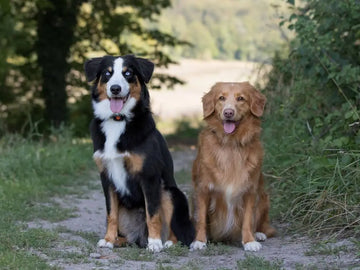Dogs often greet us in ways that melt our hearts—wagging tails, excited barks, and sometimes, carrying a toy in their mouths. This charming behavior isn't just random; it reveals much about your dog's emotions, instincts, and communication style. Let’s explore why your furry friend might eagerly grab a toy when you return home and how this ties into their deep connection with you.
Instincts and the Legacy of Pack Behavior
Dogs inherit many behaviors from their wolf ancestors, including their instinct to bring objects to their pack. In the wild, wolves often share food or significant finds with their pack members as a way of strengthening bonds and contributing to the group. When your dog brings you a toy, it might be fulfilling this instinct, seeing you as a valued member of its "pack."
Sharing Affection and Trust
When your dog offers you a toy, it’s not just about sharing a possession—it’s an act of trust. Toys are among a dog’s most cherished items, often infused with their scent and emotional attachment. By presenting a favorite pet toy, your dog is showing their love and comfort in your presence.
Celebrating Your Return
Coming home is a major event for your dog, often the highlight of their day. Bringing you a toy can be their way of amplifying the celebration, signaling joy and excitement. The act also gives them a purposeful way to channel their energy, making your reunion even more memorable.
Encouraging Playtime and Interaction
Dogs are social creatures who thrive on interaction. By greeting you with a toy, they might be inviting you to engage in play. Whether it’s a tug toy for dogs or a squeaky ball, your pet could be saying, “Let’s have fun together!” This behavior underscores their need for stimulation and companionship after hours apart.
A Nod to Hunting Instincts
Toys often act as a substitute for prey, tying into a dog’s natural hunting instincts. By carrying and presenting an item like a toy, your dog is mimicking the act of sharing a successful "hunt." It’s a nod to their ancestral roots, albeit in a modern and adorable form.
Seeking Positive Reinforcement
Dogs quickly learn which actions earn your attention. If you’ve responded with affection, play, or praise when they bring you a toy, they might continue doing so to keep receiving that positive feedback. This learned behavior reinforces their connection with you while providing a rewarding outlet for their excitement.
Possessiveness with a Touch of Playfulness
Sometimes, a dog bringing a toy to you is less about sharing and more about showing off. They might let you hold the toy briefly or simply display it proudly before reclaiming it. This playful possessiveness reflects their attachment to their belongings and their comfort in teasingly interacting with you.
Interactive Toys for Dogs: Enhancing the Bond
If your dog frequently brings toys, consider incorporating interactive toys for dogs into their routine. These toys not only stimulate their minds but also encourage active participation during playtime. Interactive toys can range from puzzle feeders to toys that squeak or move unpredictably, keeping your dog entertained and engaged.
How to Respond to This Behavior
When your dog greets you with a toy, it’s important to respond positively. Here are a few tips to handle the situation:
- Acknowledge Their Gesture: Offer praise or pet them to show appreciation.
- Engage in Play: If time permits, spend a few minutes playing with the toy.
- Rotate Their Toys: To keep their interest alive, rotate their toys regularly. Introducing new tug toys for dogs or plush items can maintain their enthusiasm.
- Create Rituals: Establish a brief routine, like a quick game, to reinforce the behavior and strengthen your bond.
The Role of Pet Toys in Emotional Expression
Pet toys are more than just playthings—they’re an extension of your dog’s personality and emotions. Soft toys often provide comfort, while chewable or tugging options satisfy their physical and mental needs. By understanding how your dog interacts with their toys, you can better cater to their happiness and well-being.
Conclusion
When your dog brings a toy as you come home, it’s a heartwarming gesture that reflects a mix of love, instinct, and learned behavior. Whether they’re inviting you to play, celebrating your return, or showing trust, this act highlights the profound connection between you and your furry companion. Cherish these moments, and ensure your dog’s life is filled with enriching activities and a variety of toys to keep their tails wagging.










